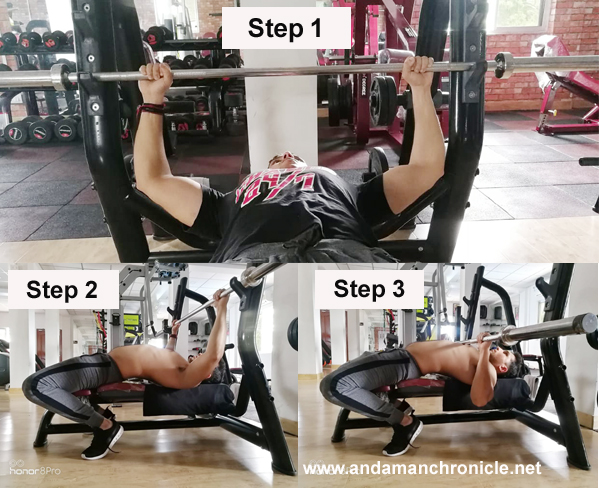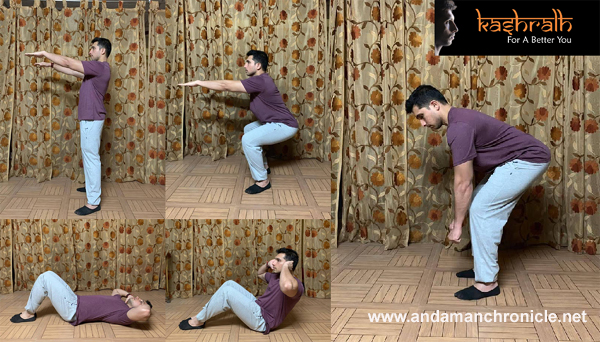- Details
- Denis Giles
- Hits: 1651
Category: Means cum Merit
Scholarship: Kind Scholarship for Young Women
Description: Buddy4Study India Foundation has announced this scholarship for the girl students in class 9 and above, who are facing financial hurdles in their pursuit to continue their education. As a part of the program, need-based scholarship assistance is provided to eligible and meritorious applicants.
Eligibility: Any girl student in class 9 and above till post-graduation, ITI, polytechnic, vocational and professional courses like CS, CA and others are eligible to apply. The applicant's family income shouldn't be more than INR 4L and must have a minimum of 60% marks in the previous examination.
Prizes & Rewards: INR 6000 a year for class 9 and 10, INR 12,000 a year for class 11 and 12 and INR 18,000 a year for girls in polytechnic, ITI, diploma, graduation and other courses.
Last Date to Apply: May 31, 2019
Application Mode: Online applications only
Short Source URL: http://www.b4s.in/AC/BKS1
Category: Means Based
Scholarship: HDFC Bank Educational Crisis Scholarship Support 2019
Description: HDFC Bank has announced this scholarship for students who are economically challenged and are victims of the crisis in their family. The program is aimed at financially aiding them in continuing their education at a critical time and reducing dropout rates from schools.
Eligibility: Class 6 to 12, undergraduate, postgraduate or doctoral students pursuing any full-time, part-time course, ITI, diploma, polytechnic, Ph.D. course from recognized institutions and facing any family crisis (orphaned, terminal illness/death of earning member, physical disability etc.) since last 3 years or less.
Prizes & Rewards: ₹10,000 as the one-time amount to selected school students and ₹25,000 to selected university, ITI, Diploma and Polytechnic students.
Last Date to Apply: June 15, 2019
Application Mode: Online applications only
Short Source URL: http://www.b4s.in/AC/HEC6
Category: Merit-cum-Means based
Scholarship: GEV Memorial Merit Scholarship 2019 for Law Students
Description: Dr. Goolam E. Vahanvati Scholarship Fund is providing scholarships to students pursuing law degree courses across the nation to study at premier law institutions. This scholarship program will provide students a chance to be mentored by elite judiciary communities of India.
Eligibility: Indian students pursuing LLB/LLM courses in any year of their course curriculum, at premier law institutions of India may apply for this scholarship. Students who have cleared CLAT, LSAT-India, AILET, or any other law entrance exam in 2019 may also apply. Applicants’ family income should not be more than ₹10.00 Lakhs per annum. Every applicant should have scored at least 60% in class 10 and 12 exams.
Prizes & Rewards: Selected scholars will be awarded a scholarship sum of ₹50,000 to ₹2.00 Lakhs per year to pay for academic expenses. Scholars would also receive training and mentorship.
Last Date to Apply: May 31, 2019
Application Mode: Apply online
Short Source URL: http://www.b4s.in/AC/GMM2
Courtesy: www.buddy4study.com
- Details
- Denis Giles
- Hits: 813

Since elections in quite a few constituencies are over I decided to visit some of those who had stood for the elections and find out what they were doing, “Where is your husband?” I asked the wife of an independent candidate, who had lost his deposit in the last ten elections he had stood in.
“Busy preparing his victory speech!” she said, a pleased look on her face.
“But he’s never won till now?” I asked surprised.
“He gives the speech to all who voted for him!” she said.
“When and where?” I asked.
“On 23rd May in our bedroom!” she said, “He stands on the cot and thanks me! But this time he’s in for a surprise!”
“Why?” I asked.
“I didn’t vote for him!” she whispered with a pleased look.
The next candidate I visited was busy going round his house instructing a contractor about something, “What are you doing?” I asked.
“I’m making an outer wall, around this wall!” he said as the contractor nodded.
“For security?” I asked.
“No, to store all the bribe money people will now come to give me for something or other. The space between the two walls, will fool the income tax people!” And the contractor nodded in agreement.
I moved away as I saw an army of masons entering and then saw the chief from the ruling party. “How are you spending your time?” I asked pleasantly.
“I am expecting a visitor!” he said with a smile and the next moment a bullet proof car drove up and a dimple cheeked young man got out and walked over to the chief from the ruling party and hugged him.
“You do have a 56 inch chest!” said the dimple cheeked young man.
“And you are not really a pappu!” said the man from the ruling party smiling, “Come let us go in and have a chai. I still make good tea!”
“Whoa! Whoa!” I shouted to the watchman, “Those two are….”
“Yes sir! Yes sir!” said the watchman, “They are just making plans that in case they both don’t get enough seats, they will come together and form a government!”
“But they fought each other tooth and nail and the voters for both were distinctly different!” I said shocked.
“Sir!” said the watchman, “Politics makes strange….!”
“Yes! Yes! I know!” I said, and slunk back to my room deciding not to do any more checking about what the others were doing. I just didn’t want anymore shocks..!
This email address is being protected from spambots. You need JavaScript enabled to view it.
- Details
- Denis Giles
- Hits: 937

Have been reading with interest and rising concern, the sexual misbehavior charges levelled against the Chief Justice of India, and the different reactions from many I am in touch witheveryday. Sadly, most of them cast aspersions on the victim, and unfortunately this is what happens with most cases of sexual harassment, rape or molestation.
I was at a gathering a few months ago, when a lady and a very intelligent one, I was talking to announced that she a teacher had filed sexual harassment charges against a master in the school where she had taught. She then recounted with sadness that it was just a matter of time before the school gave not the master, but her, marching orders!
It was a school belonging to one of the most powerful industrialists in the country, and the master concerned used to be flown by helicopter quite often to teach the children of this rich gentleman. The school did not think that what they were doing was allowing atiger loose in a sheepfold! They did not think that this same man, now hugely emboldened would do even worse in an environment which had not just other female teachers but girl students.
No, all, they thought of was to save their man!
Let’s not take the role of a judge and decide who is innocent and who isn’t, what I would like you to ponder on today is,what is your reaction to any woman who fights the muscled mighty?
“Let it be!” “You won’t win!” “Why waste your health, money and career!” “Men are like that!”
Did you ever think that with every one of these predators going free, your daughter, sister or even mother is not safe? That knowing they can get away with it, they carry on regardless?
Did you ever think, that by supporting that lone woman, you guard your own? Have you ever realized that by making it difficult for her, by discouraging her, by laughing behind her back, it could well be your woman, who’s the next victim?
Do you know what a lonely fight it is? You don’t? Then in your mind, turn and look at your wife, your daughter and place them where this lady or young girl is trying to cry for justice.
Dare to put your woman on the anvil where the victim is. After that turn and lend muscle to these of the gentler sex;form a brigade, an army and a nation that will not tolerate this nonsense from any man, whether he be from the richest family, in the most powerful post or another vagabond!
Hear their cry, and dare to act on it..!
This email address is being protected from spambots. You need JavaScript enabled to view it.
- Details
- Denis Giles
- Hits: 1218


By Buvnesh
The bench press is a compound movement (including two or more muscles) which helps in developing the pectoral muscles (chest muscles), and increasing the mass of the upper body.
Steps in doing a bench press:
1. Lie down on the exercise bench with your feet wide apart in such a way that they help balance your body while performing the exercise. Use a fairly wide grip i.e. slightly wider than your shoulders.
2. Now lower the weights towards your chest about nipple level and then push it back up overhead. Inhale deeply as you lower the weights and exhale while pushing the weights overhead.
3. Keep your chest up at all times, maintain an arch in the lower back, and keep your feet flexed.
Stick to the rep range between 9-25 rep in total i.e. 3 sets of 3 reps (or) 5 sets of 5 reps and no more.
One can go upto 12-25 reps if defining your pectoral muscles is your goal, i.e. 4 sets of 8-12 reps, progressively increasing the weights. Developing a proportionate chest takes a while and a lot of hard work. So start benching with weights according to your goals.
Until then, keep grinding! Ciao, till next week!
For queries and suggestions, please feel free to mail me at This email address is being protected from spambots. You need JavaScript enabled to view it. or WhatsApp me on 9932083266
- Details
- Denis Giles
- Hits: 1146


By Buvnesh
Anyone joining a gym needs to have thorough knowledge of his physical and cardiovascular capacity. This can easily be done with the help of a ‘Check-List”. My ‘Check-List’ is a set of functional movements that help me understand my clients’ capacity, and plan a workout, based on their individual weaknesses and strengths.
There are certain functional movements that we all do daily, while performing normal, routine tasks.
SQUATS: A very common example of a squat would be sitting on and getting up from, a chair. Depth is important in a Squat; the lowest one can go is parallel to the floor. How widely placed one’s feet are, that is stance, has to be taken care of. If the knees point forward as one squats, then the ankles need to be fixed. And if they point sideways, then the stance needs to be fixed.
PUSH-UPS: There are about 99 or even more variations of push-ups but the traditional push-ups is enough to access a person’s push capacity.
PULL-UPS: Pull-ups are extremely helpful in building up strength.
SIT-UPS and PLANKS help determine a person’s core strength.
DEAD-LIFTS helps to access a person’s lower back capacity as one lifts weights off the ground.
The TREADMILL helps to access a person’s cardiovascular capacity. For those who cannot run well on a treadmill, there is the option for spot running and skipping.
What one looks for when the above mentioned movements are performed is the posture, point of fatigue, etc. a good posture helps avoid injuries, and hit the muscle targeted.
So friends, get started, hit the gym and stay fit! Ciao, till next week!
For queries and suggestions, please feel free to mail me at This email address is being protected from spambots. You need JavaScript enabled to view it. or WhatsApp me on 9932083266